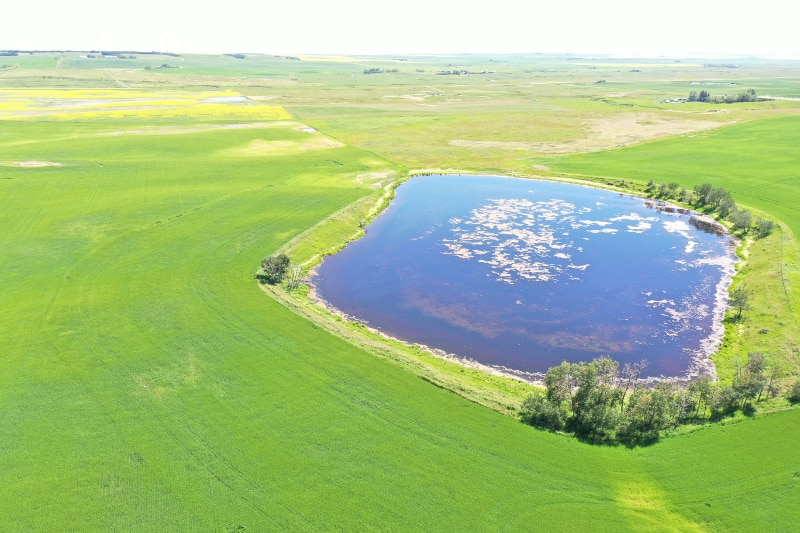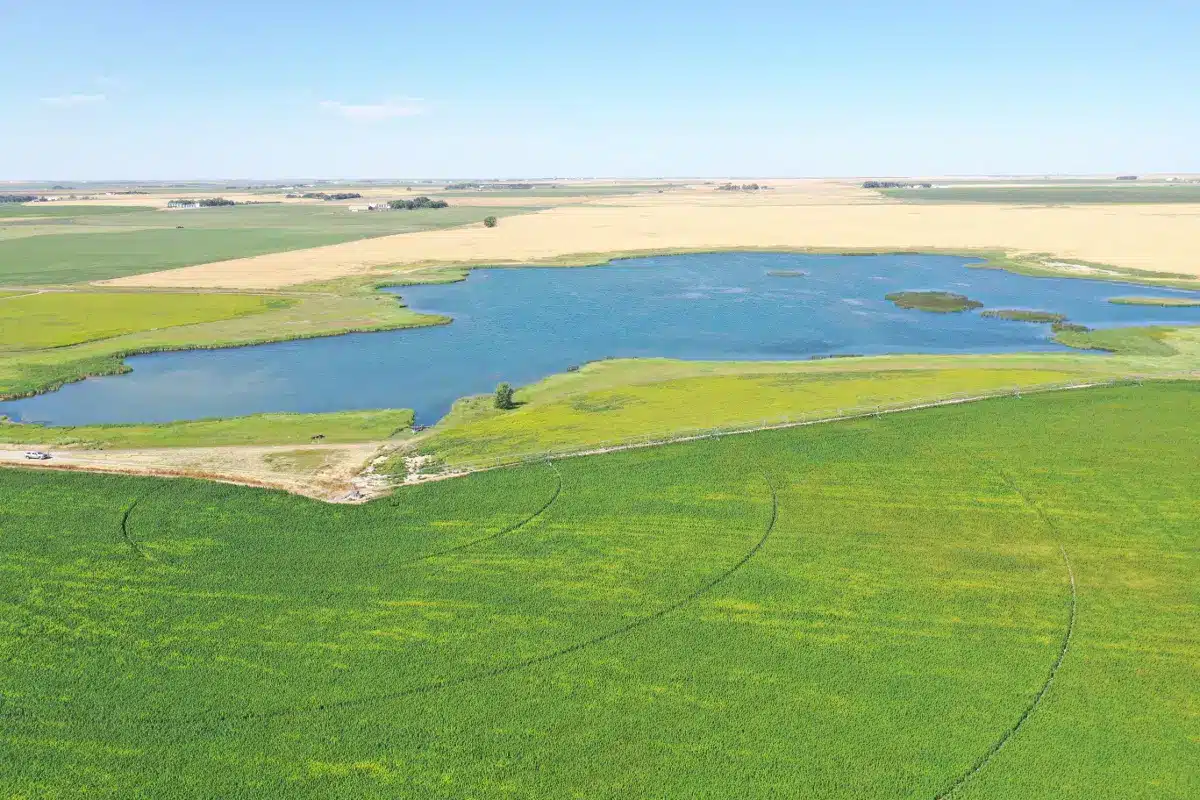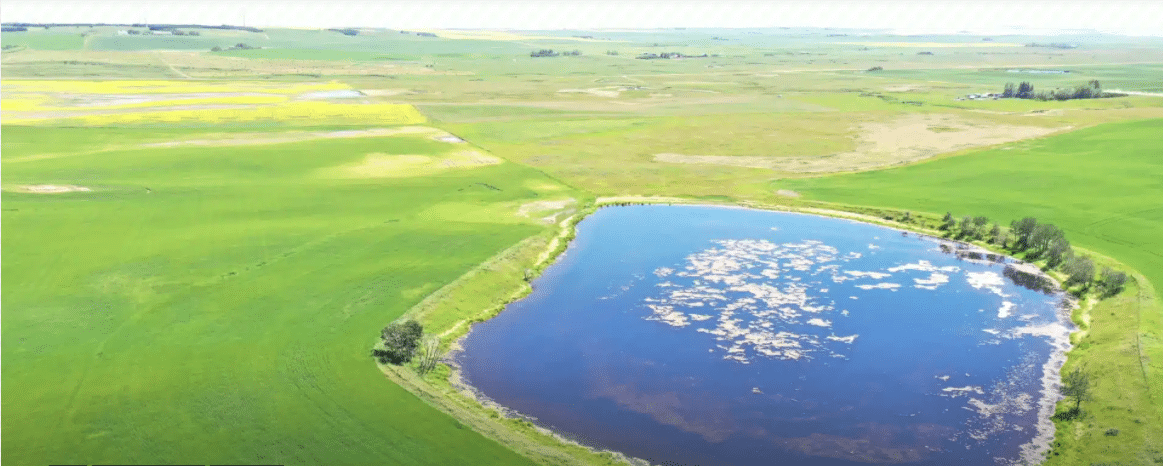A three-year watershed study will help ensure pesticide risk levels are determined using real-world data and not over-conservative models, researchers say.
Nevin Rosaasen is helping spearhead one of the most comprehensive water monitoring studies in Alberta in recent memory.
A lot has gone into it: hundreds of thousands of dollars in funding has allowed researchers to screen 15 Alberta wetlands adjacent to agricultural land for 127 different pesticides. The data will be stored in an online portal which will be available for consideration in pesticide risk assessments completed by Health Canada’s Pest Management Regulatory Agency (PMRA).
The study will provide useful information that the PMRA can consider in a national water monitoring framework that the PMRA is developing in collaboration with partners across the country.
The watersheds are located in the Three Hills and southern Alberta regions. It’s work that Rosaasen is embracing. The sustainability and government relations lead for the Alberta Pulse Growers Commission is a fourth-generation farmer and a leading agricultural climate economist who’s known for being a passionate advocate for sensible pesticide policy in Canada.
“Our wetlands are very biodiverse functioning ecosystems and are not being threatened with pesticides. Farmers are using pesticides in a responsible manner. This study is hugely valuable as it will help us demonstrate that to the PMRA,” he says.
The PMRA is undergoing a transformation process that will strengthen its oversight and its protection of human health and the environment, according to the federal government.
As part of the transformation process, the Pest Control Products Act is undergoing a targeted review and is looking at ways to modernize its business practices, increase transparency and increase the use of real-world data on water monitoring, crop production and pesticide use.
The water monitoring study is spearheaded by Team Alberta Crops, a working collaboration between eight of Alberta’s crop commissions: Alberta Barley, Alberta
Beekeepers Commission, Alberta Canola, Alberta Pulse Growers, Alberta Seed Growers, Alberta Sugar Beet Growers, Alberta Wheat Commission and the Potato Growers of Alberta.
The project also has the support of Results Driven Agriculture Research, Canadian Agricultural Partnership, Bayer, Syngenta, BASF and Corteva Agriscience.
It’s at the tail end of the second year of its three-year running time, and Rosaasen is hoping to either extend it or have the PMRA pick it up after the three years are complete. The project is looking specifically at Alberta’s agricultural wetlands and looking for traces of pesticide runoff to help inform the PMRA transformation process, including its review of the Pest Control Products Act.
Need for Real-World Data
According to Greg Bartley, director of crop protection & crop quality for Pulse Canada, the study will provide the PMRA with valuable data far superior to the modelled estimates often used to determine pesticide risk.
“Better real-world data will help PMRA to carry out risk assessments that result in more realistic exposure scenarios. In the past, we have seen the review of certain active ingredients or pesticides where the PMRA has relied on model data. Any time you rely on model data, the estimated exposure scenarios are ultra conservative,” Bartley says.
“The challenge when you have a conservative estimate is you really over-estimate risk level, and decisions are based on a risk level that is actually a lot higher than whatever pesticide levels are potentially present in the environment. This could conceivably result in the cancellation of a product that growers rely on.”
If regulators are able to use real-world data, it offers them a realistic picture of how pesticides are being used. This will help PMRA refine their risk assessments and decide whether the risk posed by a certain product is acceptable and whether to maintain its registration — something the PMRA itself says is a long time coming.
“As we’ve heard from many of our stakeholders, there’s a feeling out there that PMRA needs to do a better job of communicating the decisions that we’re making. People aren’t questioning the decisions necessarily, but rather they are wondering what data and information has gone into PMRA making a review or re-evaluation decision,” says Lindsay Noad, director general of transformation for the PMRA.
“Currently, our pesticide use data is based on what we get as part of our own review process, but we’re working very closely with our stakeholders to see where we might be able to get more data about how pesticides are being used, and where.”
The Pest Control Products Act received royal assent in December of 2002 and came into force in June 2006. All pesticides manufactured, imported, distributed or used in Canada must be registered by the PMRA or otherwise authorized under the Pest Control Products Act to ensure they meet Canadian health and environmental standards, bear the Canadian label and can be used safely and effectively according to label directions.
The Act requires all pest control products be re-evaluated on a 15-year cycle and gives Canada’s health minister the authority to remove a pesticide from the market if the risks associated with the product are not acceptable.
Over the past two decades, several reviews of the Act have been carried out and resulted in several key recommendations from stakeholders, namely support for:
• Process modernization, including a new proposed approach for continuous oversight of pesticides and how it improves the regulatory model overall;
• A re-evaluation system that ensures resources are available to manage pesticides that present the greatest risk to human health and the environment; and
• Greater openness, transparency, and accessibility of processes to ensure that more meaningful and informed input can be provided into the decision-making process and so that decisions are clearly understood.
“Over the years we’ve had many conversations with stakeholders around the Pest Control Products Act and whether it is fit for purpose. Does it really do what it was originally designed to do?” Noad says.
It was those same consultations that identified the need for a national pesticide water monitoring program and a framework to collect pesticide use information to better inform decision-making and facilitate a process of continuous oversight of pesticides.

The Power of Wetlands
The water monitoring study spearheaded by Rosaasen is unique in that it’s not monitoring major waterways like lakes, rivers or streams. In larger bodies of water, pesticide residues get diluted to the point of becoming extremely hard to measure, not only due to dilution but because things like UV light from the sun have usually broken them down.
That’s why it’s key to look at wetlands, which are the first recipients of pesticide drift from adjacent fields, Rosaasen says.
“Wetlands are what we hypothesize as worst-case scenario situations, where you have farmers applying pesticides adjacent to those very wetlands,” Rosaasen says.
But the study goes even further and also looks at vegetative filter strips that separate farmers’ fields from those wetlands.
“We’re not only examining the distance or the width of the vegetation between the high-water mark and where the crop is sprayed; we’re also looking at percentage of ground cover. What are the dominant species of grasses, sedges and rushes? Are there any willows and poplars and so forth? We want to better understand any pesticide drift or pesticide migration into wetlands,” he adds.
The study will help PMRA narrow down exactly how pesticides are being used and their real-world presence in runoff, if any.
“In the past, if you were to go out and do a grab sample of a stream and submit that data to the PMRA, because they don’t know what the proven pesticide use is on the fields adjacent to it, they can’t rule out that there’s no risk to ecological health,” Rosaasen adds.
“What we’ve done is we’ve built basically a priority list of pesticides being used here in Alberta based on use patterns, but also based on upcoming re-evaluations.”
Bigger Picture
Those re-evaluations could determine what pesticide products can continue to be allowed to be used in Canada, and according to Bartley, it’s crucial those decisions be based on real-world data.
Bartley closely follows what’s happening in the European Union with regard to its hazard-based approach to some of its passive pest control product reviews, where a product’s registration is automatically cancelled if it is determined to meet certain hazard criteria.
“What we’d like to do is avoid such a scenario in Canada and ensure PMRA decisions remain based on risk. That said, timely risk-based decision making that results in predictable outcomes for pesticide reviews in Canada has to be reflective of the use pattern in Canada, and the actual risks the product poses,” he says.
“We don’t want to rely on data that results in over-conservative estimates of potential risk, and then results in the removal of pesticides from the market due to those over-conservative risk estimates.”
Currently, Health Canada works with its international counterparts to undertake joint scientific reviews of applications and leverages the regulatory effort of other jurisdictions as much as possible under its current processes.
As part of its review, Health Canada is seeking to apply proportionality between the regulatory effort expended on a given pesticide and the risks it poses so that more resources can be allocated to higher risk pesticides. This could have an overall positive effect on pesticide manufacturers and people who use those products, PMRA says on its website.
While strict environmental and health protections will remain in place, PMRA says this would create less burden associated with bringing these products to the market. For users including growers, this approach should promote access to important pesticides recognized as posing lower risks to human health and the environment.














